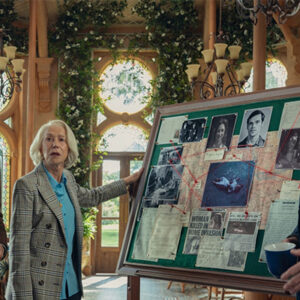There’s a peculiar magic in fiction that knows its roots—that stretches its limbs into the strange, cracked soil of history and draws something alive up from the earth. Whether it’s a supernatural tale set in a small Southern town or a slow-burning mystery woven through generations, fiction grounded in real events carries a different sort of weight.
Like the dead that rise in the Bless Your Heart series, it too becomes restless.
Writers working in genres like horror, crime, Southern gothic, and magical realism know real history isn’t a limit. It’s texture. In the Bless Your Heart series, that fusion is front and center. The fictional Evans women are caught in a tumbleweed of curses and community secrets, but their world is built on real scorched ground, buried bones, and generational grief. That’s what makes stories like theirs feel so alive: because it remembers.
To write regional fiction (or fiction inspired by real events), you must live in a place’s landscape, physically and emotionally. That means using the stories already buried in its dirt (or, like vampires of old, carrying some of it with you): the disasters, the oddities, the urban legends, and the oral histories whispered over fenceposts and across kitchen tables.
The Spindletop fire that begets much of the Evans women’s world isn’t just one town’s history, but a defining part of its culture. A defining event that reshaped the Gulf Coast, the Spindletop gusher in 1901 marked the beginning of the American oil age, transforming the rural landscape of Beaumont, Texas into an industrial boomtown. But with prosperity comes danger: fires, environmental ruin, economic upheaval, scandal—all of which literally went up in flames in the Spindletop fire of 1902. For a fiction writer who calls Beaumont her hometown, that infamous blaze becomes more than backdrop. It becomes a symbol of legacy, destruction, and rebirth.
When readers encounter a fictional town whose past includes something like Spindletop, they instinctively lean in closer. The story, if you’ll forgive the pun, has stakes. It feels real. It feels lived in.
Then comes the flora of local legends—the spice that kicks the flavor up a notch.
when fiction borrows from real history, it shouldn’t just retell it—it should transform it.In the piney woods and bramble-thick fields of Southeast Texas, there’s another kind of truth that lingers like the ghostly pebble thrower of Peach Tree, the clinking glass at the Sabine Pass Lighthouse, the flashing of the Saratoga Lights, the Kissing Statue reported to come alive outside Forest Lawn Funeral Home. Some of these folkloric legends are little more than regional myth. Others, like the ghost wolves that stalk the pages of Another Fine Mess, are grounded in truth (yes, the coyote-red wolf hybrids are real).
Real or imagined, when history and legends blend together, they do more than scare. They remind us that every patch of forest has a history that the land remembers, even if its people don’t. Blending the real with the fictional, the known with the forgotten, blurs the line between horror and heritage—and that’s where Southern storytelling thrives.
The Evans women are powerful not because they exist outside of the ordinary, but because they’re tangled within it. The generational trauma and secrets that thread through their bloodline isn’t metaphorical, it’s historical. These women live in the echo of fires, both those of their small town and of the wider world during their time. Their curses might be fictional, but they’re built on real pain.
And that’s the rub: when fiction borrows from real history, it shouldn’t just retell it—it should transform it. Use the emotional truth of it. Use the real horror of it. In the Evanses’ world, the Spindletop fire becomes a spiritual wound, and the crimes, both real and invented, should remind readers that horror isn’t just supernatural. Sometimes, it’s historical. Sometimes, it’s familial.
Writing fiction based off real history is an act of creative preservation. You don’t have to set your story in the exact year the fire burned or the wolves returned, but you should know it happened. You should know the smell of scorched wood and burned oil, the weight of old superstitions, the way a family line can rot when secrets become poison. Fiction that respects its roots becomes a sort of living record—an offering to the ghosts who still roam the page, and to the people that still live amongst them.
This type of fiction creates legacy, allowing fictional characters to walk in the spectral footprints of those who came before. And it gives readers the strange, delicious, feeling that maybe, just maybe, the world they’re reading about was never made up at all.
***














